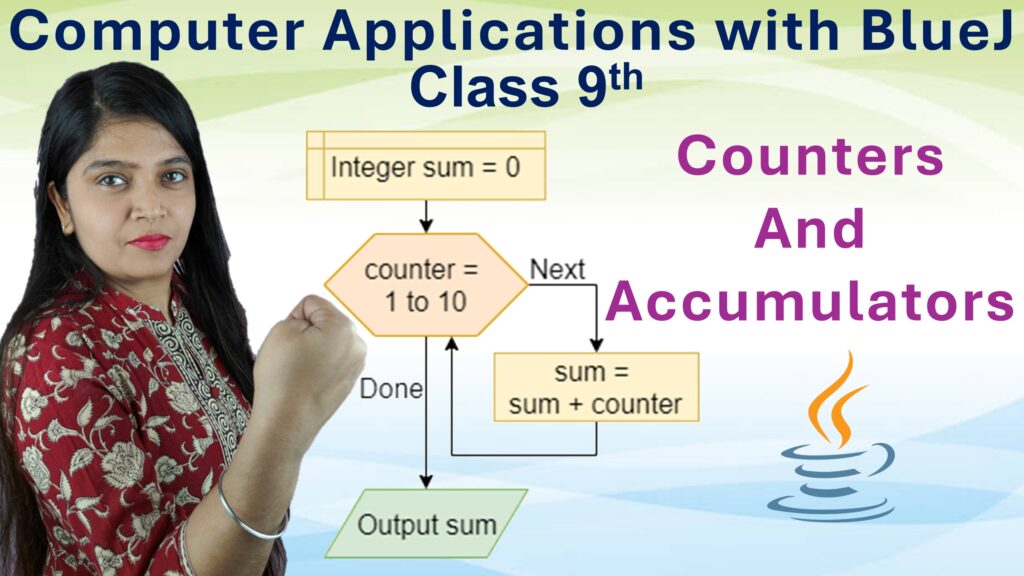Test Yourself
Q1: Multiple Choice Type
i. \(\frac{0}{5}\) is a rational number. \(\frac{0}{8}\) is a rational number, then \(\frac{0}{5}\div\frac{0}{8}\) is :
We know:
\[
\frac{0}{5} = 0 \quad \text{and} \quad \frac{0}{8} = 0
\]
So,
\[
\frac{0}{5} \div \frac{0}{8} = 0 \div 0
\]
But dividing zero by zero is undefined.
Answer: d. undefined
ii. a and bare two rational numbers such that a + b = 0; then:
\[
a + b = 0 \Rightarrow b = -a
\]
So \(a\) and \(b\) are equal in magnitude but opposite in sign.
Answer: c. a and b are numerically equal but opposite in sign
iii. The product of rational number \(\frac{3}{8}\) and its additive inverse is:
Additive inverse of \(\frac{3}{8}\) is \(-\frac{3}{8}\)
\[
\frac{3}{8} \times \left(-\frac{3}{8}\right) = -\frac{9}{64}
\]
Answer: d. \(-\frac{9}{64}\)
iv. The sum of rational number \(\frac{2}{3}\) and its reciprocal is:
Reciprocal of \(\frac{2}{3}\) is \(\frac{3}{2}\)
\[
\frac{2}{3} + \frac{3}{2} = \frac{4}{6} + \frac{9}{6} = \frac{13}{6} = 2\frac{1}{6}
\]
Answer: b. \(2\frac{1}{6}\)
v. The product of two rational numbers is -1, if one of them is \(\frac{2}{5}\), then other is:
Let the other number be \(x\), then:
\[
\frac{2}{5} \times x = -1 \Rightarrow x = -1 \div \frac{2}{5} = -1 \times \frac{5}{2} = -\frac{5}{2}
\]
Answer: c. \(-\frac{5}{2}\)
vi. Statement 1: For a rational number \(\frac{7}{9}, \frac{7}{9}-0=\frac{7}{9}\) but \(0-\frac{7}{9}=-\frac{7}{9}\). Hence subtraction has only right identity.
Statement 2: Subtraction has no identity.
Which of following options is correct?
From Statement 1:
\[
\frac{7}{9} – 0 = \frac{7}{9} \quad \text{(True)} \\
0 – \frac{7}{9} = -\frac{7}{9} \quad \text{(Also true)}
\]
So subtraction has no two-sided identity.
✅ Statement 1 is true
❌ Statement 2 is false
Answer: c. Statement 1 is true, and statement 2 is false.
vii. Assertion (A): Additive inverse of \(\frac{2}{5}\ is-\frac{5}{2}\).
Reason (R): For every non-zero rational number ‘a’, ‘-a’ such that a + (-a) = 0
Check Assertion:
Additive inverse of \(\frac{2}{5}\) is \(-\frac{2}{5}\), not \(-\frac{5}{2}\)
✅ Assertion is false
Check Reason:
Yes, for every rational number \(a\),
\[
a + (-a) = 0
\]
✅ Reason is true
Answer: d. A is false, but R is true
viii. Assertion (A): Multiplicative inverse of \(-\frac{7}{5}\ is\ -\frac{5}{7}\).
Reason (R): For every non-zero rational number ‘a’, there is a rational number \(\frac{1}{a}\) such that \(a\times\left(\frac{1}{a}\right)=1\).
Check Assertion:
Multiplicative inverse of \(-\frac{7}{5}\) is indeed \(-\frac{5}{7}\), because:
\[
-\frac{7}{5} \times -\frac{5}{7} = \frac{35}{35} = 1
\]
✅ Assertion is true
Check Reason:
This is the definition of multiplicative inverse:
\[
a \times \frac{1}{a} = 1
\]
✅ Reason is true
✅ R correctly explains A.
Answer: a. Both A and R are correct, and R is the correct explanation for A
ix. Assertion (A): \(\frac{1}{2}+2=\frac{5}{2}\), which is a rational number.
Reason (R): If \(\frac{p}{q}\ and\ \frac{r}{s}\) are any two rational numbers then \(\frac{p}{q}+\frac{r}{s}=\frac{r}{s}+\frac{p}{q}\)
Check Assertion:
\[
\frac{1}{2} + 2 = \frac{1}{2} + \frac{4}{2} = \frac{5}{2}
\]
✅ This is a rational number. So, assertion is true.
Check Reason:
\[
\frac{p}{q} + \frac{r}{s} = \frac{r}{s} + \frac{p}{q}
\]
✅ Commutativity of addition holds. Reason is true
But ❌ R is not a direct explanation of why \(\frac{5}{2}\) is rational — it’s just a property.
Answer: b. Both A and R are correct, and R is not the correct explanation for A
x. Assertion (A): 0 and \(\frac{11}{12}\) are two rational numbers and \(\frac{11}{12}\neq0\) then \(0\div\frac{11}{12}=0\), a rational number.
Reason (R): If a rational number is divided by some non-zero rational number, the result is always a rational number.
Check Assertion:
\[
0 \div \frac{11}{12} = 0 \times \frac{12}{11} = 0
\]
✅ 0 is a rational number. So, assertion is true
Check Reason:
Yes, dividing any rational number by non-zero rational number gives rational result.
✅ Reason is true
✅ And here, R explains A correctly.
Answer: a. Both A and R are correct, and R is the correct explanation for A
Q2: Write :
i. The rational number that does not have a reciprocal.
Any non-zero rational number has a reciprocal. But,
0 is the only rational number which does not have a reciprocal
Because:
Reciprocal of a rational number \( \frac{a}{b} \) is \( \frac{b}{a} \).
But, if \( a = 0 \), then \( \frac{b}{a} = \frac{b}{0} \), which is undefined.
So,
\( \frac{0}{1} \) has no reciprocal.
ii. The rational numbers that are equal to their reciprocal.
Let a number \( x \) be equal to its reciprocal:
\[
x = \frac{1}{x}
\]
Multiplying both sides by \( x \):
\[
x \times x = 1 \Rightarrow x^2 = 1
\]
\[
x = \pm 1
\]So, the rational numbers which are equal to their reciprocals are \( 1 \text{ and } -1 \)
iii. The reciprocal of \(-\frac{8}{17}+\left(\frac{-8}{17}\right)\).
First simplify the expression:
\[
-\frac{8}{17} + \left( \frac{-8}{17} \right) = -\frac{8}{17} – \frac{8}{17} = -\frac{16}{17}
\]Now find the reciprocal:
\[
\text{Reciprocal of } -\frac{16}{17} = -\frac{17}{16}
\]Answer: \( -\frac{17}{16} \)
Q3: Write five rational numbers between \(-\frac{3}{2}\ and\ \frac{5}{3}\).
Step 1: Find LCM of denominators 2 and 3
\[
\text{LCM}(2, 3) = 6
\]Step 2: Convert to like denominators:
\[
-\frac{3}{2} = \frac{-9}{6},\quad \frac{5}{3} = \frac{10}{6}
\]Step 3: Multiply numerator and denominator by \(5 + 1 = 6\) to create space for 5 numbers
\[
\frac{-9 \times 6}{6 \times 6} = \frac{-54}{36},\quad \frac{10 \times 6}{6 \times 6} = \frac{60}{36}
\]Step 4: Find five numbers between -54 and 60 with denominator 36:
Pick numerators between -54 and 60:
\[
\frac{-30}{36},\ \frac{-15}{36},\ \frac{0}{36},\ \frac{18}{36},\ \frac{45}{36}
\]You may simplify them too:
\[
\frac{-5}{6},\ \frac{-5}{12},\ 0,\ \frac{1}{2},\ \frac{5}{4}
\]∴ Required rational numbers: \( \frac{-5}{6},\ \frac{-5}{12},\ 0,\ \frac{1}{2},\ \frac{5}{4} \)
Q4: Write five rational numbers greater than -4.
Step 1: Understand the condition
We are asked to find rational numbers that are greater than -4.
That means any rational number which lies to the right of -4 on the number line.
Step 2: Write five rational numbers just greater than -4
Examples of rational numbers greater than -4:
Pick any 5 of them. For example:
- -3
- -2
- -1
- 0
- 1 and so on
These are all valid rational numbers greater than -4.
Answer: -3, -2, -1, 0, 1 and so on
Q5: What should be added to \(-2\frac{1}{2}\) to get \(-3\frac{1}{3}\)?
Step 1: Convert mixed fractions into improper fractions\[
-2\frac{1}{2} = -\left(\frac{2 \times 2 + 1}{2}\right) = -\frac{5}{2}
\]
\[
-3\frac{1}{3} = -\left(\frac{3 \times 3 + 1}{3}\right) = -\frac{10}{3}
\]Step 2: Let the number to be added be \(x\)
We know:
\[
– \frac{5}{2} + x = -\frac{10}{3}
\]Step 3: Solve the equation
To find \(x\), subtract \(-\frac{5}{2}\) from both sides:
\[
x = -\frac{10}{3} + \frac{5}{2}
\]Step 4: Take LCM and simplify
LCM of 3 and 2 is 6:
\[
x = \left( -\frac{10 \times 2}{6} + \frac{5 \times 3}{6} \right) = \left( -\frac{20}{6} + \frac{15}{6} \right)
\]
\[
x = \frac{-20 + 15}{6} = \frac{-5}{6}
\]Answer: \(-\frac{5}{6}\)
Q6: What should be subtracted from \(2\frac{1}{2}\) to get \(-3\frac{1}{3}\)?
Step 1: Convert mixed fractions into improper fractions
\[
2\frac{1}{2} = \frac{5}{2}, \quad -3\frac{1}{3} = -\frac{10}{3}
\]Step 2: Let the number to be subtracted be \(x\)
We know:
\[
\frac{5}{2} – x = -\frac{10}{3}
\]Step 3: Solve for \(x\)
Subtract \(\frac{5}{2}\) from both sides:
\[
-x = -\frac{10}{3} – \frac{5}{2}
\]Take LCM of 3 and 2 = 6:
\[
-x = \left( \frac{-10 \times 2}{6} – \frac{5 \times 3}{6} \right) = \left( \frac{-20 – 15}{6} \right) = \frac{-35}{6}
\]Now multiply both sides by -1:
\[
x = \frac{35}{6}
\]Answer: \(\frac{35}{6}\)
Q7: If \(m=-\frac{7}{9}\ and\ n=\frac{5}{6}\), verify that:
i. \(m-n\neq\ n-m\)
We are given:
\(m = -\frac{7}{9}\), \(n = \frac{5}{6}\)
Now calculate \(m – n\):
\[
m – n = -\frac{7}{9} – \frac{5}{6}
\]Take LCM of 9 and 6 = 18:
\[
= \left( \frac{-14}{18} – \frac{15}{18} \right) = \frac{-29}{18}
\]Now calculate \(n – m\):
\[
n – m = \frac{5}{6} – (-\frac{7}{9}) = \frac{5}{6} + \frac{7}{9}
\]Take LCM of 6 and 9 = 18:
\[
= \left( \frac{15}{18} + \frac{14}{18} \right) = \frac{29}{18}
\]So we have:
\[
m – n = \frac{-29}{18}, \quad n – m = \frac{29}{18}
\]Hence, \(m – n \ne n – m\)
ii. \(-(m+n)=(-m)+(-n)\)
Calculate \(m + n\):
\[
m + n = -\frac{7}{9} + \frac{5}{6}
\]Take LCM of 9 and 6 = 18:
\[
= \left( \frac{-14}{18} + \frac{15}{18} \right) = \frac{1}{18}
\]Now calculate \(-(m+n)\):
\[
-(m+n) = -\left( \frac{1}{18} \right) = \frac{-1}{18}
\]Now calculate \(-m\) and \(-n\):
\[
-m = \frac{7}{9}, \quad -n = -\frac{5}{6}
\]Now calculate \((-m) + (-n)\):
\[
= \frac{7}{9} – \frac{5}{6}
\]Take LCM of 9 and 6 = 18:
\[
= \left( \frac{14}{18} – \frac{15}{18} \right) = \frac{-1}{18}
\]Hence, \(-(m+n) = (-m) + (-n)\)
Q8: Represent rational numbers \(-\frac{7}{3}\ and\ \frac{7}{4}\) on same number line.
Step 1: Convert rational numbers to mixed fractions
\[
-\frac{7}{3} = -2\frac{1}{3}, \quad \frac{7}{4} = 1\frac{3}{4}
\]So, we need a number line from at least -3 to +2.
Step 2: Divide intervals accordingly
👉 For \(-\frac{7}{3}\), divide each whole number into 3 equal parts (thirds).
👉 For \(\frac{7}{4}\), divide each whole number into 4 equal parts (fourths).
Step 3: Mark the points
– To mark \(-\frac{7}{3}\), move **2 wholes and 1 third to the left** of 0.
– To mark \(\frac{7}{4}\), move **1 whole and 3 fourths to the right** of 0.
🧮 Here’s a sketch-style representation idea (draw this on paper or digitally):
←──●───|───Φ───●───|───|───●───|───|───●──|──|──|──●──|──|──Φ──●───→
-3 -2 -1 0 1 2
↑ ↑
-7/3 marked 7/4 marked
Hence, \(-\frac{7}{3}\) lies between -3 and -2, and \(\frac{7}{4}\) lies between 1 and 2 on the number line.
Q9:
i. Add: \(-\frac{5}{6}\ and\ \frac{3}{8}\)
Step 1: Find LCM of 6 and 8:
\[
\text{LCM}(6, 8) = 24
\]Step 2: Convert to like denominators:
\[
-\frac{5}{6} = -\frac{20}{24}, \quad \frac{3}{8} = \frac{9}{24}
\]Step 3: Add the numerators:
\[
-\frac{20}{24} + \frac{9}{24} = \frac{-11}{24}
\]Answer: \(-\frac{11}{24}\)
ii. Subtract: \(\frac{3}{8}\ from\ -\frac{5}{6}\)
Step 1: Convert to like denominators:
\[
\frac{3}{8} = \frac{9}{24}, \quad -\frac{5}{6} = -\frac{20}{24}
\]Step 2: Subtract:
\[
\frac{-20}{24} – (\frac{9}{24}) = -\frac{9}{24} – \frac{20}{24} = -\frac{29}{24}
\]Answer: \(-\frac{29}{24}\)
iii. Multiply: \(-\frac{5}{6}\ and\ \frac{3}{8}\)
\[
-\frac{5}{6} \times \frac{3}{8} = -\frac{15}{48} = -\frac{5}{16}
\]Answer: \(-\frac{5}{16}\)
iv. Divide: \(\frac{3}{8}\ by\ -\frac{5}{6}\)
Step 1: Multiply by reciprocal:
\[
\frac{3}{8} \div -\frac{5}{6} = \frac{3}{8} \times -\frac{6}{5} = -\frac{18}{40} = -\frac{9}{20}
\]Answer: \(-\frac{9}{20}\)
Q10:
i. By what number should \(\frac{12}{17}\) be multiplied to get \(-\frac{4}{7}\)?
Let the required number be \(x\).
Then,
\[
\frac{12}{17} \times x = -\frac{4}{7}
\]To isolate \(x\), divide both sides by \(\frac{12}{17}\):
\[
x = \frac{-\frac{4}{7}}{\frac{12}{17}} = -\frac{4}{7} \times \frac{17}{12}
\]Now multiply:
\[
x = -\frac{4 \times 17}{7 \times 12} = -\frac{68}{84}
\]Simplify:
\[
x = -\frac{17}{21}
\]Answer: \(-\frac{17}{21}\)
ii. By what number should \(\frac{12}{17}\) be divided to get \(-\frac{4}{7}\)?
Let the required number be \(y\).
Then,
\[
\frac{12}{17} \div y = -\frac{4}{7}
\]This implies:
\[
y = \frac{\frac{12}{17}}{-\frac{4}{7}} = \frac{12}{17} \times -\frac{7}{4}
\]Now multiply:
\[
y = -\frac{12 \times 7}{17 \times 4} = -\frac{84}{68}
\]Simplify:
\[
y = -\frac{21}{17}
\]Answer: \(-\frac{21}{17}\)







Leave a Comment